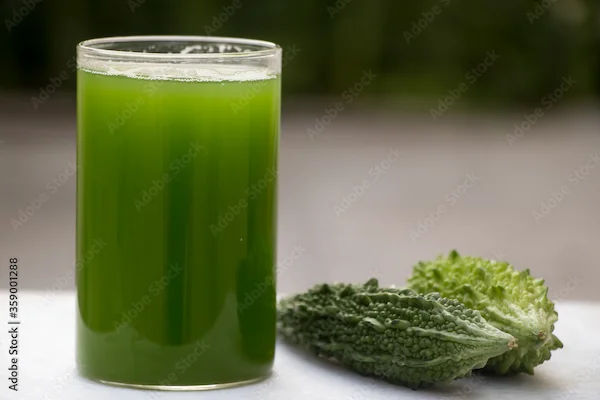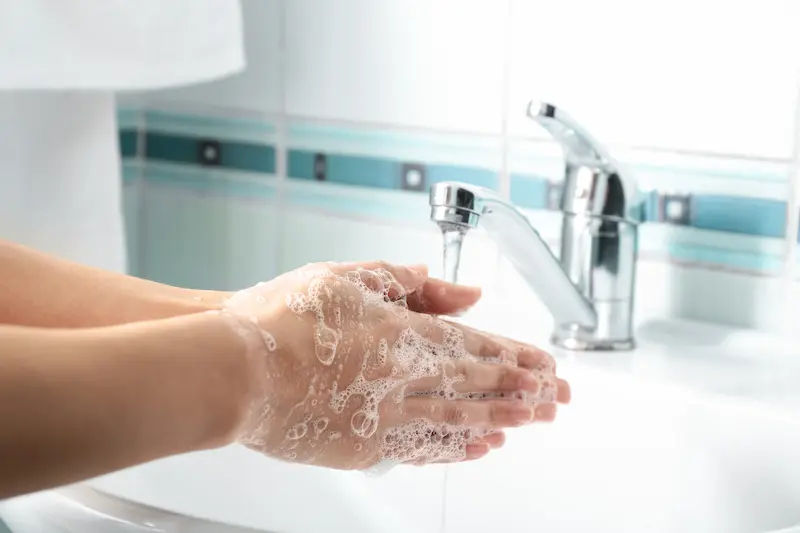10 Amazing Health Benefits of Drinking Water from a Copper Bottle
Curious about ayurvedic water? Learn real copper water benefits, how to use a copper vessel safely, and what science says, with tips from trusted sources.

Written by Dr. J T Hema Pratima
Reviewed by Dr. Rohinipriyanka Pondugula MBBS
Last updated on 12th Nov, 2025

Introduction: Why copper bottles are trending—and what science says
Copper bottles are everywhere—from yoga studios to office desks—often promoted as ayurvedic water, or “tamra jal.” Fans say there are many copper water benefits, from better digestion to immunity. But what does reliable, up-to-date science actually support? This friendly guide explains potential benefits, how to use a copper vessel safely, what to skip, and where trustworthy medical sources stand.
Consult a Top Nutritionist for Personalised Advice
What is ayurvedic water, and how does a copper vessel fit in?
In Ayurveda (a traditional system of medicine from India), water is sometimes stored in a copper vessel for several hours, then sipped throughout the day. This practice, called tamra jal, is believed to balance the body. While this tradition is centuries old, modern medical research is still catching up. Some benefits are connected to simply drinking enough water; others relate to copper’s well-known antimicrobial properties. It’s important to separate tradition from proven facts and to use copper bottles safely.
10 potential health benefits of drinking water from a copper bottle
Most of the gains below come from two places: (1) the health benefits of good hydration and (2) copper’s material properties, especially its antimicrobial surface activity. Where evidence is limited, you’ll see careful, honest notes.
1) It can help you drink more water, more consistently
- Carrying a dedicated bottle often makes people drink more—whether at work, the gym, or while commuting.
- Good hydration supports energy, temperature regulation, concentration, and exercise performance. It also helps prevent constipation and supports kidney and urinary health. (Mayo Clinic; Harvard Health Publishing)
2) Hydration supports kidney function and may lower kidney stone risk
Adequate fluids dilute urine and reduce crystal formation, a key step in kidney stone prevention. A bottle you like using (copper or otherwise) makes it easier to hit your daily fluid goals. (Mayo Clinic)
3) Copper’s surface has antimicrobial activity
Copper and some copper alloys can inactivate many microbes on contact. This is why copper surfaces are used in certain healthcare settings. While this does not “sterilise” your water, it may reduce the survival of some bacteria on the inside surface of the bottle between washes. Always keep the bottle clean; antimicrobial activity is a helpful extra—not a substitute for hygiene. (U.S. EPA; CDC)
4) Storing water in copper may reduce some bacteria over time
Small laboratory and field studies have found that storing clean water in a copper container for several hours (often 8–24 hours) can reduce levels of certain bacteria (for example, E. coli). This is promising but not a replacement for proper water treatment. Always start with safe water. (Peer-reviewed studies, e.g., Journal of Health, Population and Nutrition, 2012)
5) Provides a tiny amount of an essential mineral (copper)
Copper is an essential trace mineral that helps with iron metabolism, connective tissue formation, and nervous and immune system function.
Most people get enough from food (nuts, seeds, legumes, whole grains, shellfish). Water stored in copper can contribute small amounts, which vary by water pH, temperature, and storage time. The safe upper limit for total daily copper intake for adults is 10 mg/day. Drinking-water guidance levels are 1.3 mg/L (U.S. EPA action level) and 2 mg/L (WHO guideline). When used correctly (neutral pH water, reasonable storage time), levels typically stay well below these limits. (NIH Office of Dietary Supplements; WHO; U.S. EPA; CDC)
6) May mean fewer odours and less “slime” than some plastics when cleaned regularly
Thanks to copper’s antimicrobial properties, some users notice fewer persistent odours than with certain plastic bottles. Still, biofilms can form in any bottle—wash and dry it daily. (CDC; U.S. EPA)
7) A plastic-free, durable option that avoids BPA and similar chemicals
Using a metal bottle avoids potential exposure to plasticisers such as BPA found in some plastics (many are BPA-free, but not all). If you prefer to reduce plastic contact with your drinking water, copper is one option alongside stainless steel and glass. (CDC; Harvard Health Publishing)
8) Encourages a mindful hydration habit
Many people find the feel and look of a copper vessel pleasant to use. If that enjoyment leads you to drink enough water each day, your body benefits—regardless of the material.
9) Can complement safe water practices when travelling
If you must store already safe or boiled water for several hours (for example, overnight), a copper bottle’s material properties may help discourage some bacterial regrowth. This is a backup layer, not a purification method. Always follow local safe-water guidance. (WHO; CDC)
10) Supports skin, digestion, and overall well-being—via hydration
Clearer thinking, better exercise performance, easier digestion, and healthier skin appearance are all linked to meeting your hydration needs. A bottle that helps you stay on track is a practical wellness tool. (Mayo Clinic; Harvard Health Publishing)
Important safety notes about copper water
Safety notes about copper water
- Start with safe water. Copper does not remove chemical contaminants, and it is not a primary disinfectant for unsafe water.
- Watch storage time and what you store. Limit storage to about 6–12 hours for neutral-pH water. Do not store acidic liquids (lemon water, vinegar, juices) in copper—they can dissolve excess copper.
- Clean daily. Use mild soap and water; air-dry with the cap off. For tarnish inside, occasional cleaning with a pinch of salt and lemon on a soft cloth followed by thorough rinsing is common—but avoid abrasive scrubbing that could damage the surface.
- Know the signs of too much copper. Nausea, stomach cramps, vomiting, and a metallic taste can occur with excessive copper. Stop use and seek medical advice if you notice symptoms. (CDC)
- Be cautious if you already have copper exposure. Homes with copper plumbing corrosion, people taking copper supplements, or those with certain medical conditions (e.g., Wilson’s disease) should speak with a clinician before using a copper bottle. (Mayo Clinic; Cleveland Clinic)
Safe levels at a glance:
Safe levels of copper include:
- Adult RDA for copper: about 900 micrograms/day (NIH ODS)
- Adult tolerable upper intake level: 10 mg/day (NIH ODS)
- Drinking-water guidance: EPA action level 1.3 mg/L; WHO guideline 2 mg/L (EPA; WHO)
Myths vs. facts
- Myth: Copper water cures thyroid problems, arthritis, or diabetes.
Fact: No high-quality clinical evidence supports these claims. Copper water should not replace medical care. - Myth: Copper bottles purify any dirty water.
Fact: Copper can reduce some microbes over time but won’t reliably remove pathogens or chemicals. Start with safe water. - Myth: More copper is always better.
Fact: Excess copper can cause harm. Use your copper bottle wisely and avoid acidic beverages in it.
How to choose and use a copper bottle wisely?
Follow the points while choosing a copper bottle wisely:
- Look for food-grade copper from a reputable brand.
- If the interior is lined (e.g., with tin or stainless steel), follow the manufacturer’s instructions; lining reduces copper contact.
- Rinse before first use. Fill with clean, neutral-pH water.
- Store water for 6–12 hours (for example, overnight), then drink the same day. Refill with fresh water rather than topping off old water.
- Wash and dry daily; deep-clean weekly.
- Avoid storing acidic drinks.
- If you’re pregnant, have a liver disorder, or have Wilson’s disease—or if your home has known high copper in tap water—ask your clinician before use.
Conclusion
Copper bottles combine ancient Ayurvedic practice with modern wellness habits. While many benefits come from simply drinking enough water, copper’s antimicrobial surface properties add a supportive advantage when used correctly. It’s not a cure-all, nor should it replace safe water practices or medical care. Think of a copper vessel as a tool that encourages hydration, mindfulness, and routine. Used safely and cleaned regularly, it can support your daily wellness in a simple, intentional way.
Consult a Top Nutritionist for Personalised Advice
Consult a Top Nutritionist for Personalised Advice

Ms. Sushma Jaiswal
Dietician
42 Years • M.Sc.(Food & Nutrition)
Bengaluru
Swasthya Nutrition, Bengaluru

Neelanjana J
clinical nutrition
3 Years • Bsc., Msc. Nutrition and Dietetics.
Bengaluru
Apollo Clinic, JP nagar, Bengaluru

Ms. Soma Saha
clinical nutrition
17 Years • B.Sc. - Home Science (Food & Nutrition), M.Sc. - Home Science (Food & Nutrition)
Kolkata
Dr Utsa Basu Clinic, Kolkata
(50+ Patients)

Ms Swastika Guha
clinical nutrition
3 Years • MSc Food Science Nutrition & Dietetics
Chennai
Apollo Sugar Clinics , Greams Road, Chennai

Dr. Ramalinga Reddy
General Physician
5 Years • MBBS MD General medicine
Bengaluru
PRESTIGE SHANTHINIKETAN - SOCIETY CLINIC, Bengaluru
Consult a Top Nutritionist for Personalised Advice

Ms. Sushma Jaiswal
Dietician
42 Years • M.Sc.(Food & Nutrition)
Bengaluru
Swasthya Nutrition, Bengaluru

Neelanjana J
clinical nutrition
3 Years • Bsc., Msc. Nutrition and Dietetics.
Bengaluru
Apollo Clinic, JP nagar, Bengaluru

Ms. Soma Saha
clinical nutrition
17 Years • B.Sc. - Home Science (Food & Nutrition), M.Sc. - Home Science (Food & Nutrition)
Kolkata
Dr Utsa Basu Clinic, Kolkata
(50+ Patients)

Ms Swastika Guha
clinical nutrition
3 Years • MSc Food Science Nutrition & Dietetics
Chennai
Apollo Sugar Clinics , Greams Road, Chennai

Dr. Ramalinga Reddy
General Physician
5 Years • MBBS MD General medicine
Bengaluru
PRESTIGE SHANTHINIKETAN - SOCIETY CLINIC, Bengaluru
More articles from General Medical Consultation
Frequently Asked Questions
Is it safe to drink ayurvedic water every day?
Yes, for most healthy adults—if you use a copper vessel correctly: start with safe water, avoid acidic liquids, limit storage time (about 6–12 hours), and keep the bottle clean. Stay well below safety thresholds for copper in water. People with certain conditions (like Wilson’s disease), those taking copper supplements, or homes with high copper plumbing levels should consult a clinician first. (WHO; CDC; NIH ODS)
How long should I store water in a copper vessel?
Common practice is overnight (6–12 hours) with neutral-pH water. Longer storage or acidic liquids can increase copper levels. Always drink the water the same day and then rinse, refill, and clean daily. (WHO; EPA; CDC)
Does a copper bottle make water safer?
It may reduce some bacteria during storage, but it’s not a substitute for filtration, boiling, or chlorination when water is unsafe. Always start with water that already meets local safety standards. (WHO; CDC)
How do I clean a copper bottle?
Wash daily with mild soap and warm water; rinse well and air-dry uncapped. For tarnish, gently wipe with a bit of lemon juice and salt on a soft cloth, then rinse thoroughly. Avoid dishwashers and harsh abrasives that can damage the surface. (General hygiene guidance; CDC cleaning principles)
How much copper is too much?
For adults, the tolerable upper intake level from all sources is 10 mg/day. Drinking-water guidance values are 1.3 mg/L (U.S. EPA action level) and 2 mg/L (WHO guideline). If you notice nausea, stomach upset, or a metallic taste, stop use and seek medical advice. (NIH ODS; EPA; WHO; CDC)




